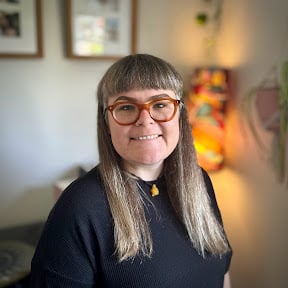3 min read
Small vs. Big Power: Understanding the Energy Choices for Australia's Future
 Gemma Cullan
May 15, 2025
Gemma Cullan
May 15, 2025
You might be hearing more and more about things like rooftop solar and home batteries, alongside the traditional power plants and big transmission lines. It can feel like two different energy worlds. So, what's the real difference between these smaller, closer-to-home power sources (what we call Distributed Energy Resources, or DER) and our big, established electrical infrastructure? Let's take a look.
The Old Way: Big Power Plants and Long Wires
For a long time, the way we got our electricity was pretty straightforward. Think of it like this:
- Giant Power Stations: Big facilities, often burning coal or gas, or large wind and solar farms located further away from cities. Places like the old Liddell coal-fired power plant (now closed) or big solar farms out in the country like New England Solar.
- Long-Distance Highways for Electricity: Huge, high-voltage power lines stretching across the country, carrying the electricity from those power stations to where it's needed. Projects like the EnergyConnect line are like building new, bigger electricity highways that can move more electricity to more homes.
- Local Roads for Power: Smaller substations that step down the high voltage to lower voltages, and then the poles and wires you see in your street, delivering power to your house.
This big system has been the backbone of our electricity supply for years.
The New Kid on the Block: Power Right Where You Need It (DER)
Now, things are changing with the rise of Distributed Energy Resources (DER). These are smaller ways of making or storing electricity, right where it's being used or very close by (Source: The Australian Energy Market Operator (AEMO)). Think of:
- Your Own Power Plant on the Roof: Rooftop solar panels turning sunlight into electricity ([Source: The Clean Energy Regulator).
- A Power Bank for Your Home: Home battery storage systems that save up extra solar power or even electricity from the grid for later use.
- Small Backyard Wind Turbines: You don't see these everywhere, but some people in rural areas use them.
- Your Car as a Battery (Eventually): Electric vehicles could even send power back to your home or the grid in the future.
- Smart Appliances That Think: Washing machines or air conditioners that can adjust their energy use based on when power is cheapest or when there's lots of renewable energy available.
Why Are We Seeing More of This "Small Power" Stuff?
There are a few big reasons why DER is becoming so popular in Australia:
- The Price is Right: Solar panels and batteries have gotten much cheaper, making them affordable for more people.
- Wanting to Go Green: Lots of us want to reduce our impact on the environment and use cleaner energy.
- Being Your Own Boss (Energy-Wise): DER can give you more control over your energy and even provide backup power if the main grid goes down (if you have a battery and hybrid inverter and it’s configured to do so).
- Saving Money on Bills: Using your own solar power and storing it in a battery can seriously cut down your electricity costs.
- Government Help: There have been schemes to encourage people to install solar and make energy efficient upgrades to their home,, making it more attractive (Source: Clean Energy Regulator).
The Good and the Not-So-Good: Small-Scale DER
|
What's Great About It |
What Can Be Tricky |
|
You can save money on your electricity bills. |
The initial cost of solar and batteries can be high. |
|
It's a cleaner way to get energy. |
It can depend on the weather (sunshine for solar). |
|
You have more control over your own power. |
Managing lots of small power sources can be complex for the grid. |
|
It can make the grid more resilient. |
You might need to upgrade your home's electrical system. |
|
It can increase the value of your home. |
Regulations and how you get paid for excess power can vary. |
The Good and the Not-So-Good: Big Power Infrastructure
|
What's Great About It |
What Can Be Tricky |
|
It can produce large amounts of power reliably. |
It can be expensive to build and maintain. |
|
It can transport power over long distances. |
It can be vulnerable to large-scale outages. |
|
It's a well-established system that we understand. |
It often relies on fossil fuels, which are limited resources and contribute to climate change. |
|
It can provide a stable base load of power. |
It can take a long time to build new large-scale projects. |
The Future: Working Together
It's not really about choosing one over the other. The future of Australia's energy system will likely be a mix of both. We'll still need large-scale renewable energy farms and the transmission lines to connect them, but we'll also see more and more homes and businesses generating and storing their own power.
The challenge is to make these two worlds work together smoothly. We need smart ways to manage all the power coming from different places, big and small, to keep the grid stable and reliable for everyone. Technologies like Reposit's smart controller are part of this solution, helping to orchestrate the flow of energy from your home to the grid and back again, making the most of both small-scale DER and the larger energy network.
